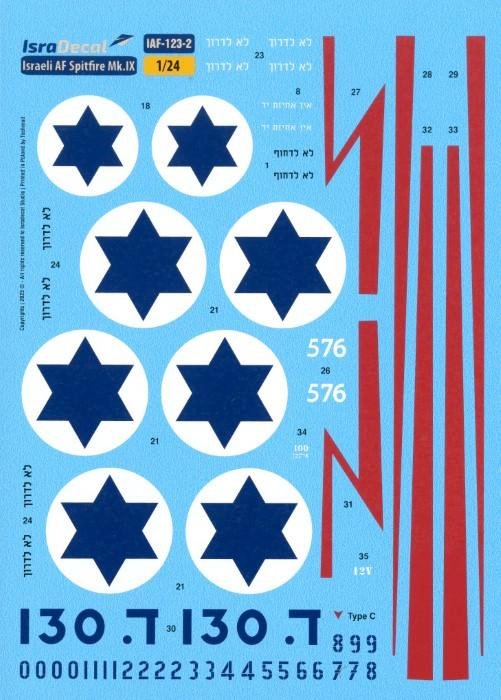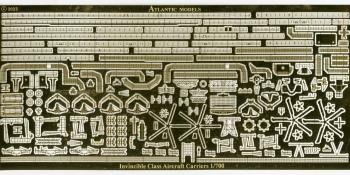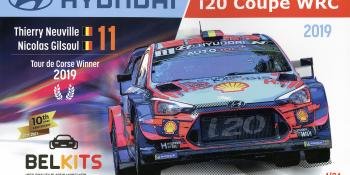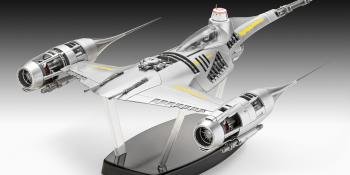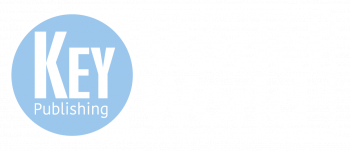Israeli aftermarket specialist IsraDecal Studios has released three sets dedicated to Airfix’s 1/24 Spitfire Mk.IXc.
When Airfix’s stunning 1/24 Spitfire Mk.IXc was released, modellers hoped for a IXe… well Israeli manufacturer IsraDecal Studios has come to the rescue with pair of upgrade/conversion sets and new decals.
At a very basic first glance, there doesn’t seem much difference between the C- and E-wings, but closer examination shows it’s more than just the cannons being moved to the outer position. Wing blisters, panels and spent shell case ejection ports were all repositioned, and in its IC 24001 Spitfire Mk.IXe Wing Conversion – produced under its IsraCast branding – IsraDecal has done most of the hard work for you.
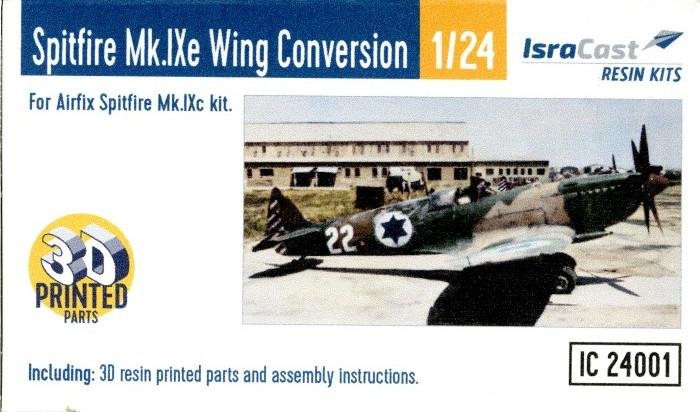
On opening the smart box, though, modellers might have something of a double take as there are just four 3D-printed resin parts inside. Rest assured, though, as the well-illustrated instructions provide a step-by-step guide into how the inboard wings are ‘tweaked’ from the kit’s original configuration to the later arrangement.
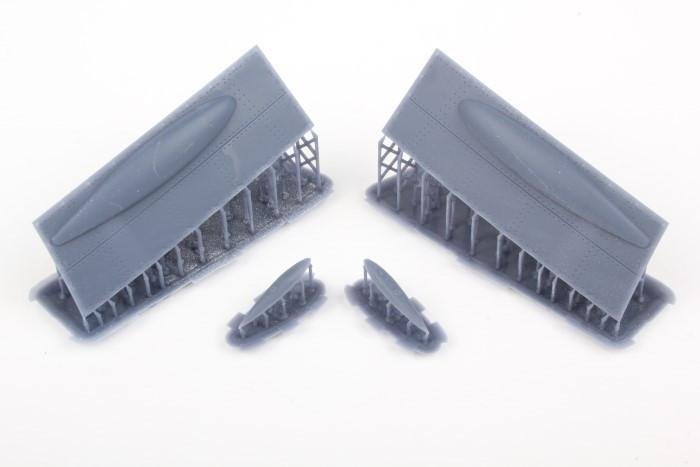
These changes locate the 20mm Hispano cannon to the outer position and advise on how to reshape the inner ‘stub’ to replicate the opening for the .50 cal machine gun. Although not mentioned on the instructions, modellers will also need to fill the muzzle openings and ejector ports for the outer wing .303 Browning gun positions (two on each side); fortunately the outer wing panel structure appears otherwise unchanged.
Read a full build article on Airfix's new-tool 1/24 Spitfire Mk.IX Superkit
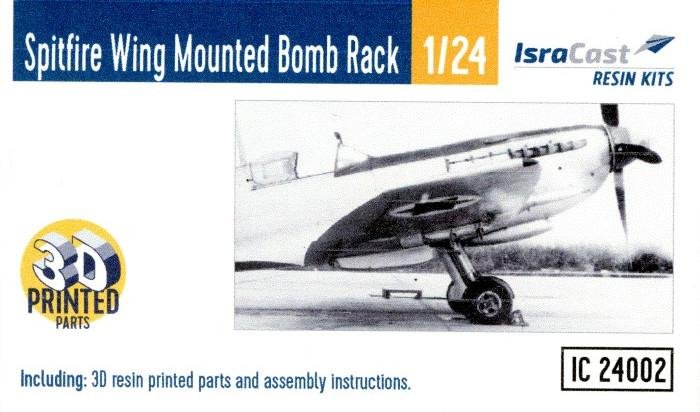
IsraDecal’s IC 24002 Spitfire Wing Mounted Bomb Rack is another useful upgrade set for the Airfix Mk.IX, and provides a pair of stores racks. Being 3D-printed items, there are just two parts in total, both being exquisitely detail, with integral bomb crutches, sway braces and associated ‘spider leg’ supports. Note, the racks are handed for the left and right-hand wings and will require careful separation from their printing ‘pegs’, especially on the ‘spider legs’ as these appear exceptionally fragile.
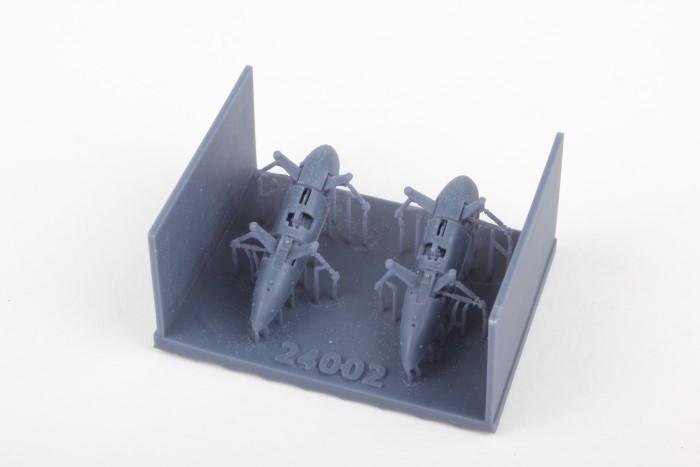
Photos of the parts mounted on the kit wings are used to show how these are located, with the front of the fairing 14mm back from the wing’s leading edges, and the pylon’s centreline aligning with the pattern of rivets between the two cannon fairing stubs. Painting guidance isn’t included, but the main fairing would usually be the same colour as the wing undersides, along with the sway braces, while supports, bomb crutches and other fittings would remain bare metal.
These bomb racks would be ideal on its own as an addition to any Mk.IX or alternatively they can be used in conjunction with IsraDecal’s Mk.IXe wing conversion set. Both products are available from IsraDecal for $14 each direct; the wing set is available currently in the UK at Hannants for £13.99, with the bomb racks arrival expected in due course, hopefully for the same price.
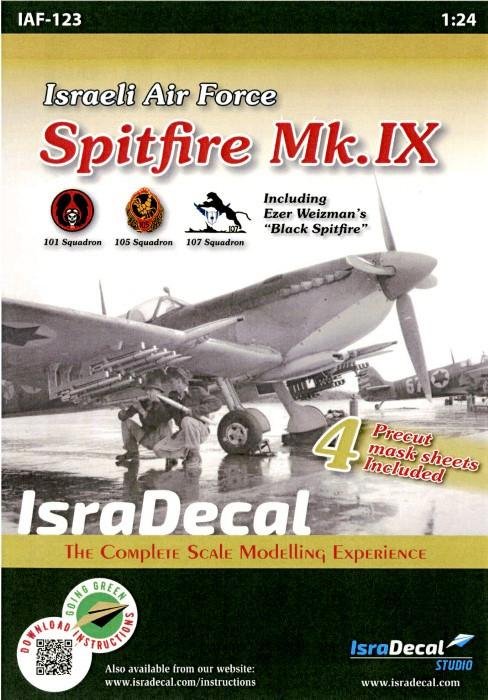
The icing on the cake for your converted Spitfire Mk.IXe comes in the form of a super mask and markings set: IAF-123 Israeli Air Force Spitfire Mk.IX, which provides markings for 18 airframes, including Ezer Weizman’s ‘Black Spitfire’, offering a mix of Mk.IXc and Mk.IXe machines.
Two sizes of national insignia are provided in decal form on two sheets, along with all unit markings and serials, but most code numbers and extra Star of David symbols are supplied on four pre-cut self-adhesive mask sheets. This combination allows for multiple models to be built from this pack – a well-considered idea and one that makes the $33 price more palatable.
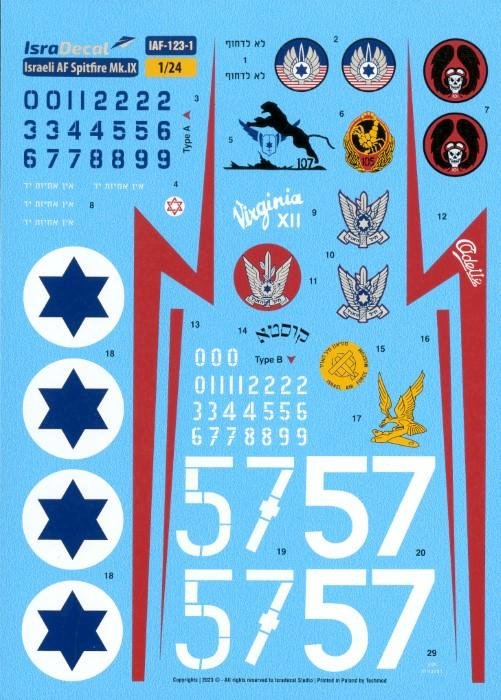
Printed by Polish firm Techmod, the decals are of the highest quality, with sharp tonal boundaries, excellent register and strong opacity. This last factor is notable on the national insignia and large white numerals, along with the yellow sections – another colour otherwise prone to being ‘see-through. Full placement and colour guides are available via the Isradecal website, with airframes depicted in Dark Green/Ocean Grey//Medium Sea Grey, Blue/Brown/Light Gray and metallic schemes, plus two versions of Ezer Weizman’s ‘Black Spitfire’.
